MP Board Solutions for Class 9 English Moments Chapter 1 – The Lost Child
MP Board Solutions for Class 9 English Moments Chapter 1 – The Lost Child are essential for understanding emotional depth and parental love as per the MPBSE curriculum. These well-structured answers help students grasp the child’s journey from material attraction to emotional realization after being separated from his parents. Designed according to the latest syllabus, these solutions strengthen comprehension and empathy. Ideal for revision and practice, they develop emotional understanding, making them a valuable study tool for Class 9 English exams.
MP Board Solutions For Class 9 English (Moments) – The Lost Child – Exercise Images
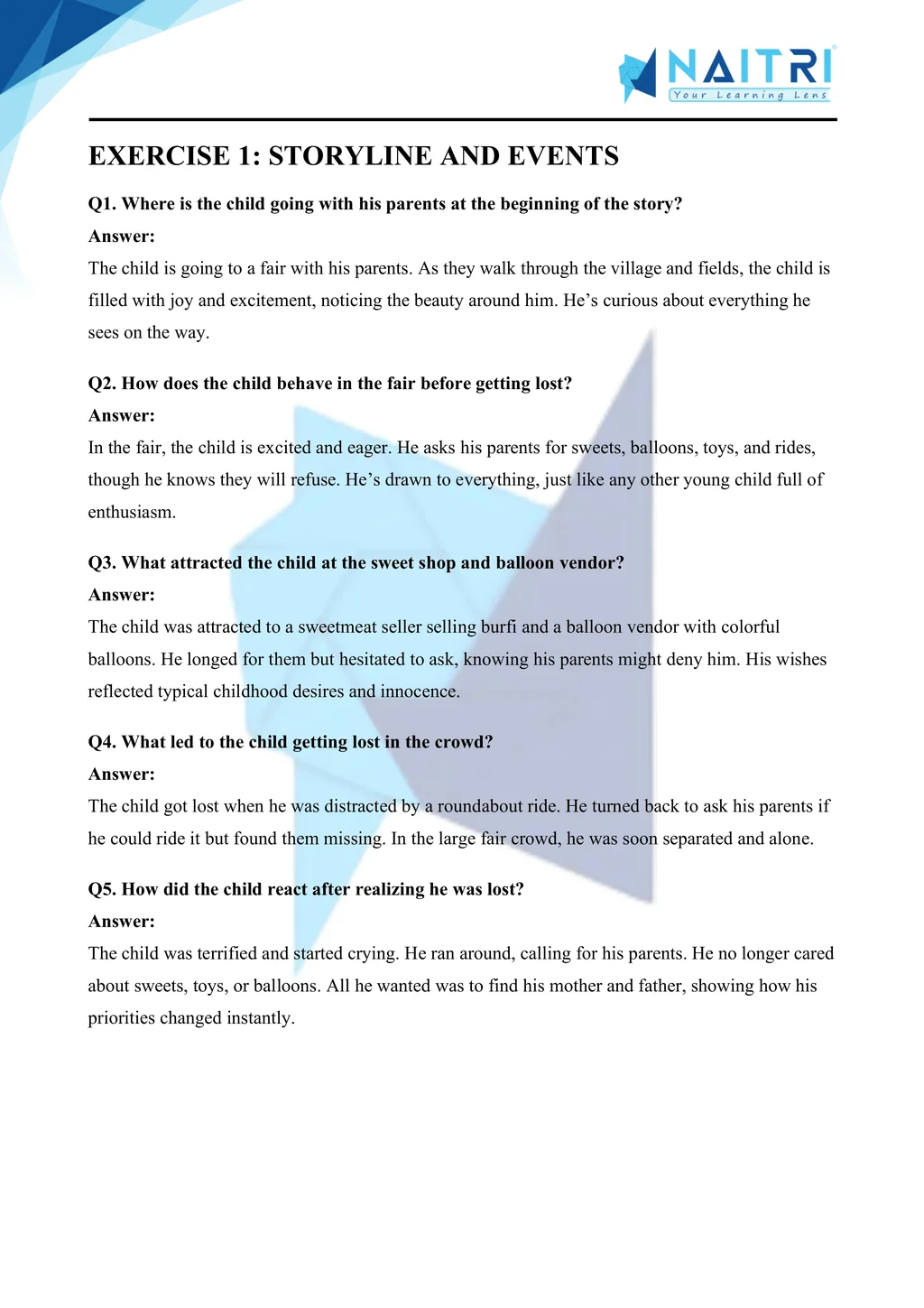
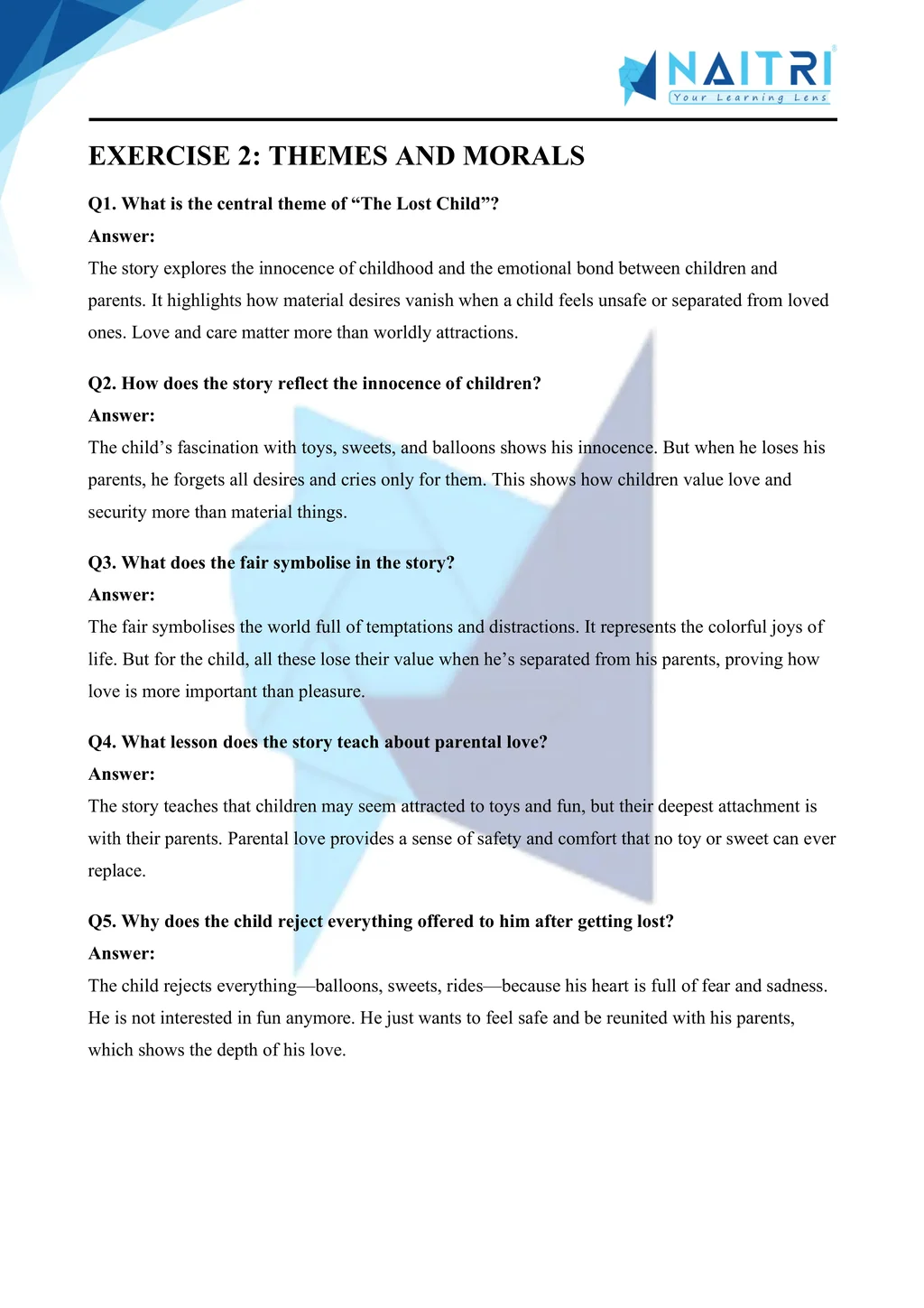
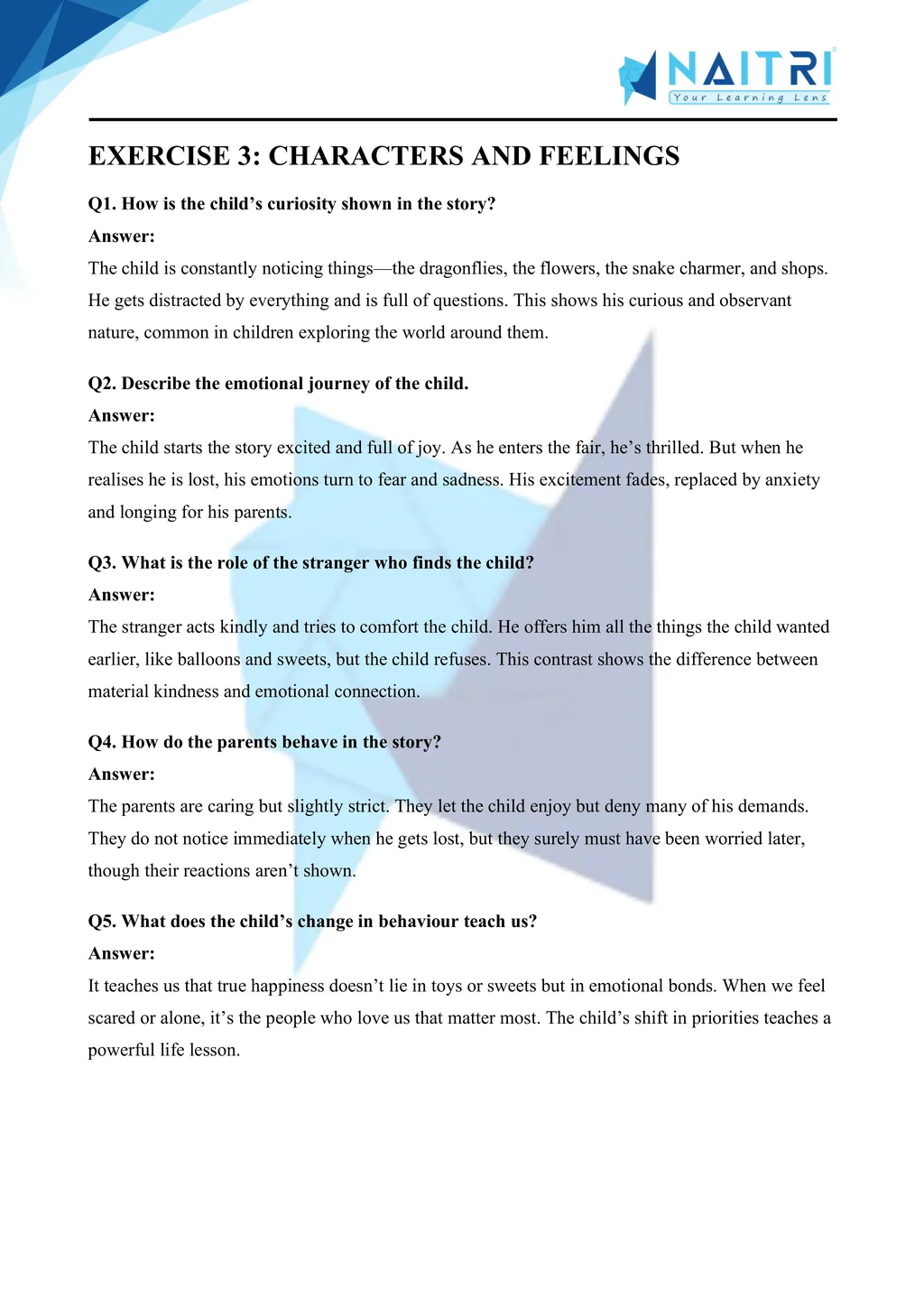
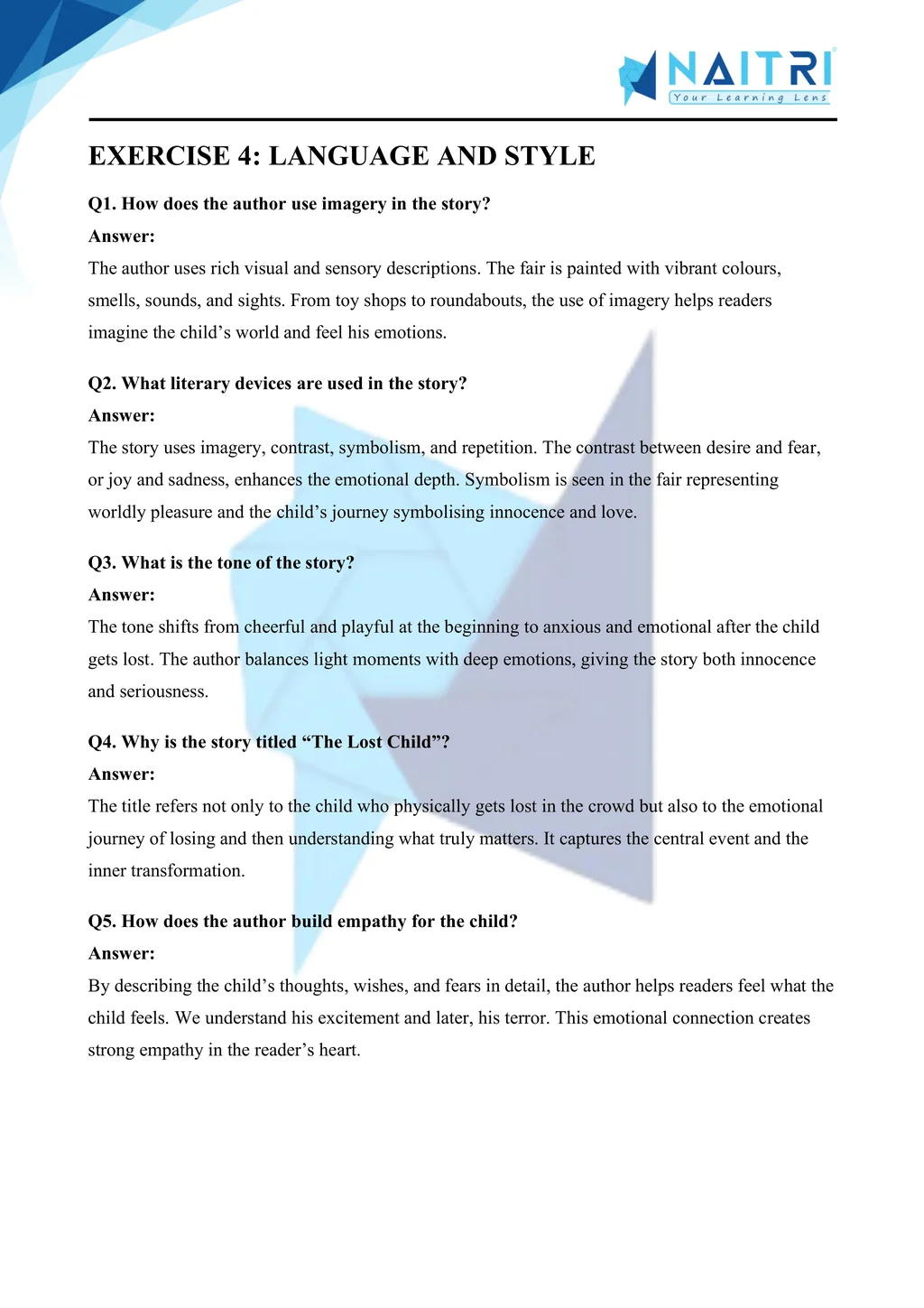
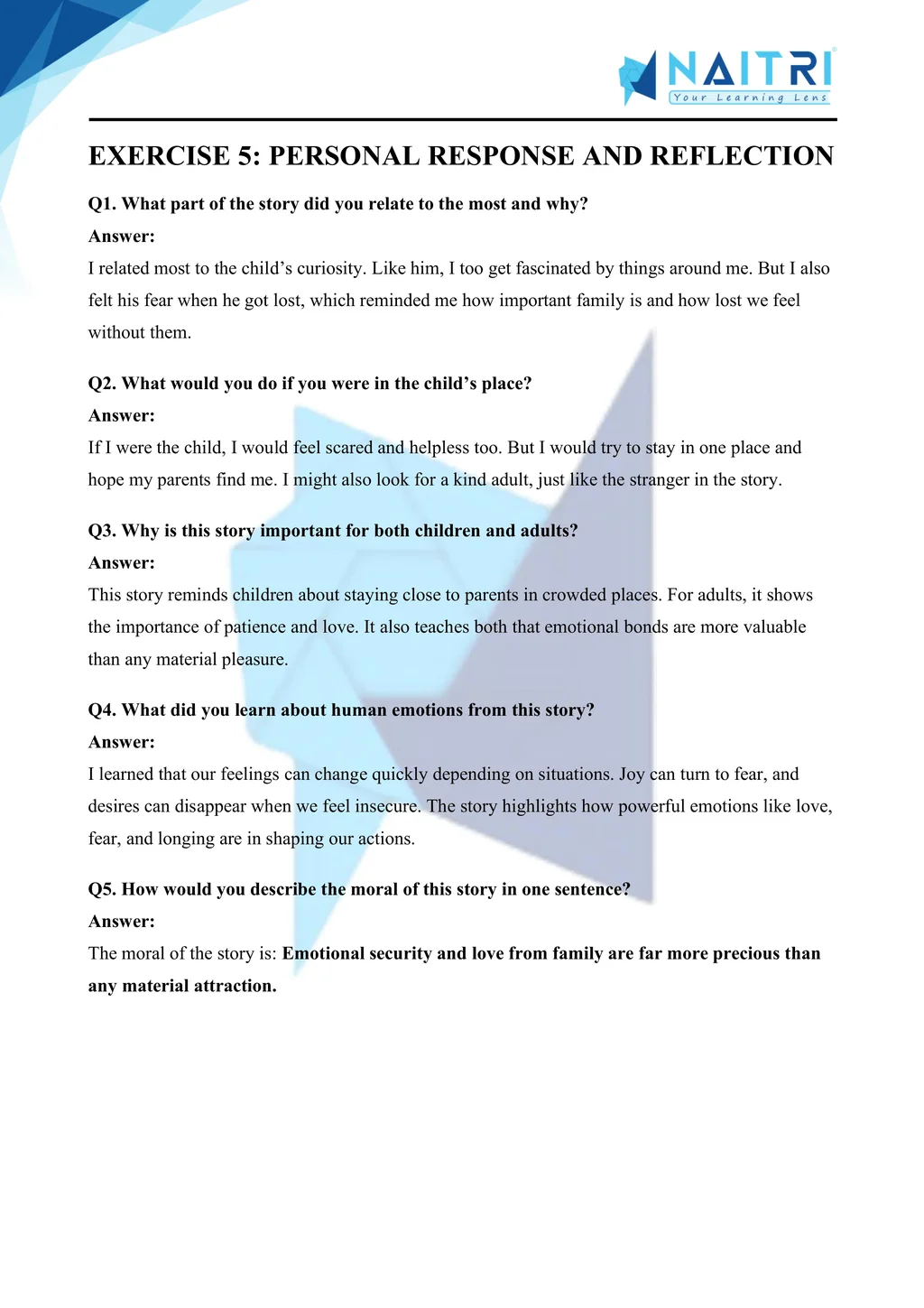
Experience English Like Never Before – With AR!
Understanding The Lost Child is now more exciting and immersive! With the NAITRI App, you can explore engaging literature through Augmented Reality (AR). Walk through a vibrant fair, feel the emotions of a lost child, and discover the power of parental love — right in front of you. Our AR-powered lessons make learning interactive, 3D, and fun, helping you retain concepts better and enjoy every topic.



Visualize . Interact . Understand . The future of learning is here
The Lost Child – Important Questions with Answers
Who is the central character in “The Lost Child”?
Answer: The central character is a little boy who gets separated from his parents during a festive fair, experiences overwhelming fear and longing.Where does the story take place?
Answer: It takes place at a village fair, full of vibrant sights, sounds, and crowds—an exciting yet chaotic setting for the lost child.What delights the child at the fair?
Answer: He is delighted by toys, sweets, balloons, rides, and animals, all capturing his attention and excitementas he wanders away.Why does the child lose his senses of direction?
Answer: The over-stimulation of sights, sounds, and people distracts him completely, making him wander off and lose sight of his parents.How does the child react when he realizes he’s lost?
Answer: He panics, feels afraid, anxious, and tears well up. He searches desperately in every direction for his parents, calling their names.Why is his faith in his parents so strong?
Answer: He trusts they will rescue him because he believes in their love and protection, staying hopeful despite the panic.Who offers comfort to the child?
Answer: A kind gentleman who notices the child’s distress and leads him around, listening to him and trying to locate the parents.What does the child ask for at first?
Answer: When giving temporary attention, he repeatedly asks for cakes, toys, and sweets, showing his strong childish desires even when in distress.How does the child behave when offered toys and sweets?
Answer: Initially thrilled, he soon crumbles under anxiety, forgetting them, and only wants to find his parents for comfort and safety.What does this episode suggest about a child’s priorities?
Answer: It shows that no matter how attractive material objects are, emotional needs like love and securitymatter far more.How is the child’s confusion described?
Answer: He is described as bewildered, wandering randomly, holding onto strangers, and asking questions in desperate attempts to locate his parents.What role does the fair’s crowd play?
Answer: The crowd adds to the child’s panic and confusion, making it harder to search and increasing his sense of loneliness.What emotions does the story evoke in readers?
Answer: It evokes feelings of empathy, anxiety, relief, and reminds readers how important parental love and closeness are in childhood.What message does this story convey about love and security?
Answer: It conveys that love, care, and emotional security from parents matter more to children than any object or pleasure.How does the child respond when reunited with his parents?
Answer: He collapses into their arms, crying tears of relief, unable to express gratitude, overwhelmed by the return of security and love.What is the significance of the title “The Lost Child”?
Answer: The title emphasizes the child’s physical and emotional disorientation, and the innate human instinct to seek belonging and care.How does the author build tension in the story?
Answer: Tension is built through vivid descriptions of the fair’s chaos, the child’s growing panic, and the uncertainty of rescue efforts.What does the story teach about material possessions?
Answer: It teaches that possessions are fleeting, while human relationships—especially with parents—provide permanent comfort and meaning.Why does the child keep asking for objects?
Answer: Even in panic, his longing for familiar comforts like food, toys, sweets shows nostalgia for normalcy and routine security.What is the climax of the story?
Answer: The emotional climax arrives when the child is finally reunited, collapsing in relief, highlighting the power of parental reassurance.How does the story reflect cultural elements?
Answer: It reflects Indian village life, festive fairs, local traditions, and strong family bonds, rooted in a familiar cultural background.What role do simple sentences play in the narrative?
Answer: The use of concise and vivid sentences mirrors the child’s short attention span, making the narrative direct and emotionally effective.Why is this story relevant today?
Answer: Because emotional bonds still outweigh materialism, reminding modern readers that in a world of distractions, human relationships remain central.What does the story tell us about parental presence?
Answer: It reminds us that parental presence provides emotional anchoring, comfort, and confidence, and their absence leads to distress and confusion.Summarize the central theme of the story.
Answer: The story centers on how even amidst distractions and desires, a child’s emotional needs and longing for familial security surpass everything else.
The Lost Child tells the emotional story of a young boy who gets separated from his parents during a village fair. Initially fascinated by toys and sweets, his desires vanish the moment he feels lost. The story beautifully portrays the bond between parents and children, showing that love and security matter more than material pleasures.
Related Chapters You May Like
Download Naitri App
Easy, Visual Learning — Right on Your Phone
Learn with Augmented Reality! The Naitri app makes CBSE and MP Board concepts interactive and fun — even in low-resource settings. Watch lessons, complete homework, take tests, and track progress — all in one place. Anytime. Anywhere.
Available on








